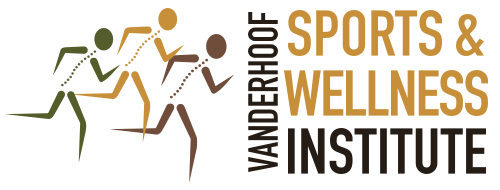Extracorporeal Shockwave Therapy (ESWT), commonly known as shockwave therapy, is a non-invasive treatment option for various musculoskeletal conditions. First introduced in orthopedic pain therapy, ESWT uses shock waves generated by a specialized device to target localized areas of the body. These pressure waves stimulate biological processes, resulting in pain relief, improved circulation, and enhanced tissue healing.
Conditions Treated with ESWT
ESWT is widely used to address both acute and chronic conditions, including:
Heel pain and plantar fasciitis
Tendon-related injuries (Achilles tendon, patellar tendon, hamstring, elbow, and shoulder)
Bone-related issues (e.g., stress fractures and non-healing fractures)
Joint injuries and inflammation
While it is often associated with sports injuries, ESWT is also effective for active individuals who experience overuse injuries from repetitive motions or strain.
How does Shockwave therapy work?
Shockwave therapy transfers energy from the shockwave device to the affected area of the body, improving metabolism and blood circulation while promoting tissue regeneration and pain relief.
The process involves:
Device Application: A handheld applicator delivers focused or radial shockwaves to the treatment area.
Session Duration: Treatment typically lasts 5–15 minutes.
Recovery: Patients may experience mild discomfort but should avoid strenuous physical activity for two weeks post-treatment.
Learn more about how ESWT works: How Shock Waves Work.
Types of Shockwave Therapy: Radial vs. Focused
Radial Shockwaves: Radial shockwaves, often referred to as soft shocks, are more suitable for treating larger surface areas with superficial conditions.
Ideal for superficial tissue problems such as muscle injuries.
Benefits include improved circulation, pain relief, and broader energy distribution.
Focused Shockwaves: Focused shockwaves are able to penetrate deeper into the tissues and provides all of its power at the designated depth.
Best for deep tissue issues like tendon injuries or bone conditions.
Targeted energy helps reduce inflammation, dissolve calcium deposits, and stimulate tissue repair.
Key Components of ESWT Equipment
Shockwave generator: This is the main section of the device that generates high-energy pressure waves, either focused or radial, in accordance with the equipment and the nature of the treatment.
Applicator or Handpiece: The shockwave gun, more commonly known as the applicator, is used to deliver shockwaves to the desired parts of the body. The applicators, however, have designs that ensure effective and precise applications, with the benefits of being able to change the intensity depending on the condition of the patient.
Control Unit: In this regard, the control unit is made for therapists to configure energy level, frequency, and treatment mode during the treatment session. The latest technologies feature a touchscreen and user-friendly interface.
Coupling Gel: Before initiating shockwave therapy, it is applied to the skin to allow proper transfer of shockwaves from the machine to the patient's body.
Energy Source: Shock waves produced by ESWT machines usually are either electromagnetic, piezoelectric, or pneumatic, with each method able to produce its own kind of shockwave and used for a certain goal of treatment-based purposes.
How Does ESWT Treat Achilles Tendinitis and Plantar Fasciitis?
Achilles Tendinitis occurs when the Achilles tendon becomes inflamed, typically due to repetitive stress or overuse. This condition often results in stiffness, pain, and limited mobility in the back of the lower leg and heel.
Plantar Fasciitis is caused by inflammation of the plantar fascia, a thick band of tissue running along the bottom of the foot, connecting the heel bone to the toes. This condition often presents as sharp heel pain, especially noticeable after periods of rest or in the morning.
Both conditions can significantly impact mobility and quality of life, often requiring a combination of treatments such as rest, stretching, physical therapy, and targeted interventions.
Extracorporeal Shockwave Therapy (ESWT) offers a non-invasive, effective option for managing these conditions. The therapy involves the application of low-energy shockwaves directly to the affected area, which can be done in an office setting without the need for anesthesia.
Benefits of Shockwave Therapy
Non-Invasive Solution:
Shockwave therapy offers a safer alternative to invasive procedures like injections or surgery. With fewer risks and quicker recovery times, it’s recognized as one of the most effective non-surgical treatment options available today.Effective Pain Relief:
Patients often notice a significant reduction in pain after just a few sessions. The acoustic waves target damaged tissue, breaking down inflammatory cells and accelerating the body’s natural healing processes.Long-Term Results:
Unlike treatments that merely mask symptoms, shockwave therapy addresses the root causes of pain. Research shows its ability to stimulate healing and provide lasting relief, making it an excellent option for managing chronic conditions.Natural Healing Activation:
This treatment enhances the body’s own healing mechanisms, helping to restore damaged tissue and improve functionality over time.Minimal Downtime:
With its non-invasive nature, patients can quickly return to their daily routines, often shortly after treatment. It’s an efficient and convenient option for those with busy lifestyles.
Learn more about ESWT advantages: Advantages of ESWT.
Side Effects of Shockwave Therapy
Shockwave Therapy is considerably safe. However, potential side effects may include discomfort, changes in skin color, bruising, tingling sensations, numbness, nerve irritation, swelling, or occasional dizziness.
At Vanderhoof Sports and Wellness Institute in Palo Alto, we are proud to offer Shockwave Therapy, a cutting-edge treatment designed to provide effective pain relief and lasting results.
Take the first step toward recovery today. Contact us at 650-323-6184 or book an appointment online to experience the benefits of shockwave therapy for yourself.




